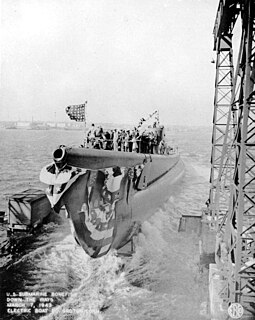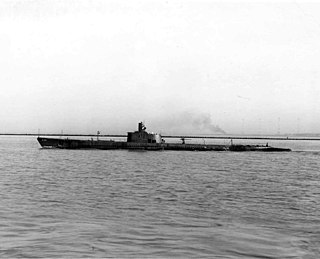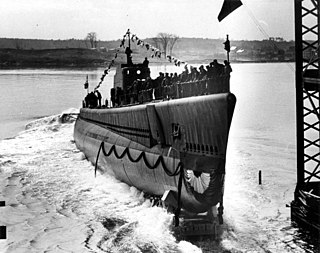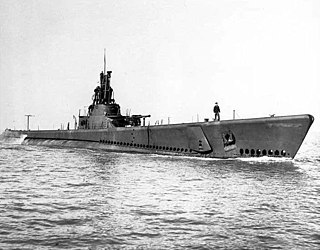
USS Seawolf (SS-197), a Sargo-class submarine, was the second submarine of the United States Navy named for the seawolf.

USS Swordfish (SS-193), a Sargo-class submarine, was the first submarine of the United States Navy named for the swordfish, a large fish with a long, swordlike beak and a high dorsal fin. She was the first American submarine to sink a Japanese ship during World War II.

USS Bonefish (SS-223) was a Gato-class submarine, the first United States Navy ship to be named for the bonefish.

USS Growler (SS-215), a Gato-class submarine, was the third ship of the United States Navy named for the growler.

USS Bowfin (SS/AGSS-287), is a Balao-class submarine of the United States Navy named for the bowfin fish. Since 1981, she has been open to public tours at the USS Bowfin Submarine Museum & Park in Pearl Harbor, Hawaii, next to the USS Arizona Memorial Visitor Center.

USS Searaven (SS-196), a Sargo-class submarine, was the only ship of the United States Navy to be named for the sea raven, a sculpin of the northern Atlantic coast of America.

USS Silversides (SS/AGSS-236) is a Gato-class submarine, the first ship of the United States Navy to be named for the silversides.

USS Drum (SS-228) is a Gato-class submarine of the United States Navy, the first Navy ship named after the drum, a type of fish. Drum is a museum ship in Mobile, Alabama, at Battleship Memorial Park.

USS Finback (SS-230), a Gato-class submarine was the first ship of the United States Navy to be named for the finback.

USS Skipjack (SS-184), a Salmon-class submarine, was the second ship of the United States Navy to be named after the fish. Her keel was laid down by the Electric Boat Company in Groton, Connecticut, on 22 July 1936. She was launched on 23 October 1937 sponsored by Miss Frances Cuthbert Van Keuren, daughter of Captain Alexander H. Van Keuren, Superintending Constructor, New York Navy Yard. The boat was commissioned on 30 June 1938. She earned multiple battle stars during World War II and then was sunk, remarkably, by an atomic bomb during post-war testing. Among the most "thoroughly sunk" ships, she was refloated and then sunk a second time as a target ship two years later.

USS Sand Lance (SS-381), a Balao-class submarine, was the first ship of the United States Navy to be named for the sand lance, a member of the family Ammodytidae.

USS Flying Fish (SS/AGSS-229), a Gato-class submarine, was the first submarine and second ship of the United States Navy to be named for the flying fish. Flying Fish is credited with having sunk a total of 58,306 tons of Japanese shipping and received 12 battle stars for World War II service.

USS Kingfish (SS-234), a Gato-class submarine, was the first ship of the United States Navy to be named for the kingfish.

USS Gurnard (SS-254), a Gato-class submarine, was the first ship of the United States Navy to be named for the gurnard.

USS Lapon (SS-260), a Gato-class submarine, was the first ship of the United States Navy to be named after the lapon, a scorpionfish of the Pacific coast of the United States.

USS Paddle (SS-263), a Gato-class submarine, was a ship of the United States Navy named for the paddlefish.

USS Pogy (SS-266), a Gato-class submarine, was the first ship of the United States Navy to be named for the pogy, or menhaden. She was credited with sinking 16 ships totaling 62,633 gross register tons during World War II.

USS Puffer (SS-268), a Gato-class submarine, was the first ship of the United States Navy to be named for the puffer.

USS Sawfish (SS-276), a Gato-class submarine, was a ship of the United States Navy named for the sawfish, a viviparous ray which has a long flat snout with a row of toothlike structures along each edge. It is found principally in the mouths of tropical American and African rivers.

USS Sunfish (SS-281), a Gato-class submarine, was the first ship of the United States Navy to be named for the ocean sunfish, Mola mola, a plectognath marine fish, having a deep body truncated behind, and high dorsal and anal fins.























